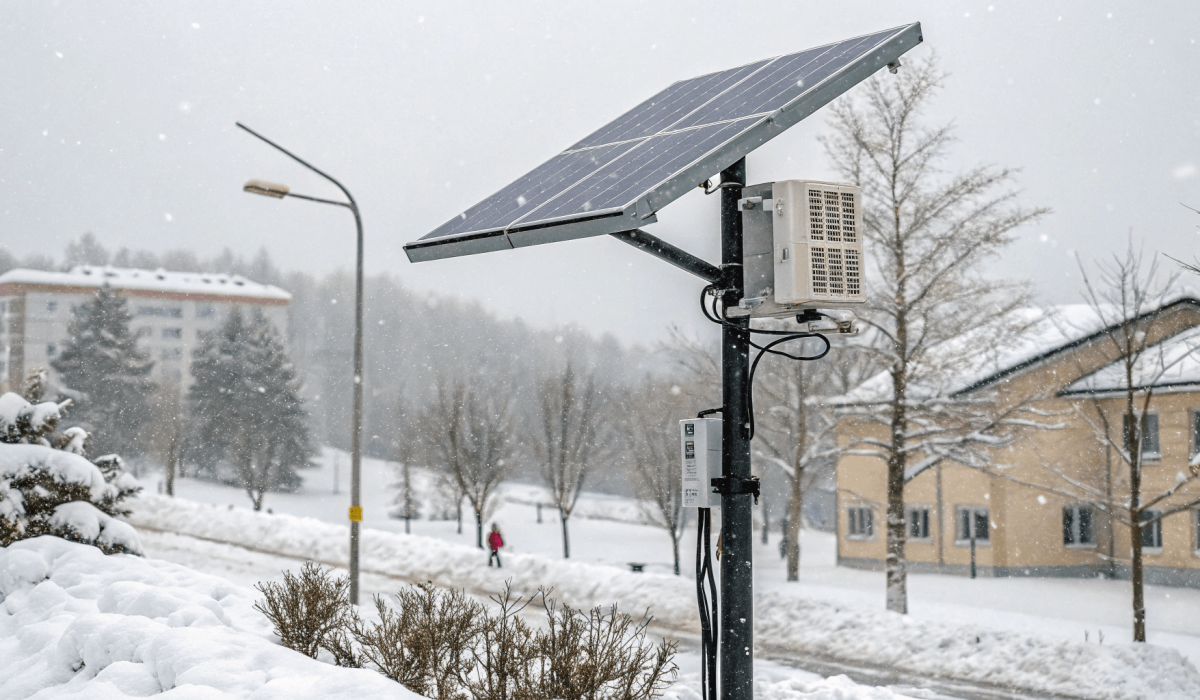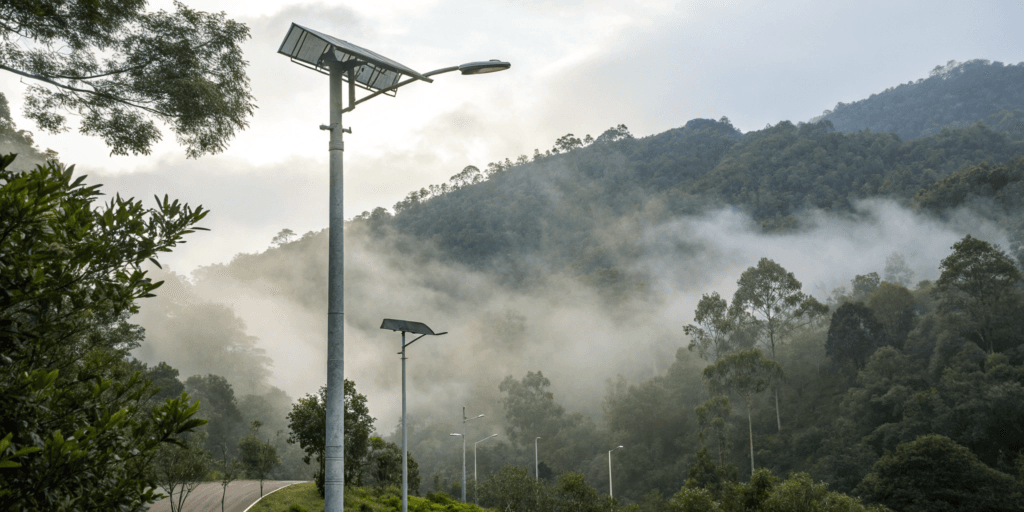Solar LED street lights offer many benefits, including cost savings, sustainability, and energy independence. However, ensuring their reliability in extreme weather conditions is crucial to maintaining consistent performance and longevity. This guide provides practical steps and considerations to make solar LED street lights reliable in harsh environments.
To ensure solar LED street lights remain reliable in extreme weather, it is essential to use durable materials, advanced thermal management, efficient battery technologies, and regular maintenance.
Key Strategies to Ensure Reliability in Extreme Weather Conditions
Opt for High IP Ratings
Choose lights with at least an IP65 rating, which guarantees protection against dust and water ingress. This ensures the lights remain functional even in heavy rain, snow, or dusty environments. An IP65 rating is critical for durability in extreme weather.Utilize Durable Materials
To withstand harsh environmental factors, select corrosion-resistant materials like marine-grade aluminum alloys or stainless steel for the frame and components. These materials are highly resistant to rust, saltwater exposure, and the wear and tear caused by extreme temperatures.Implement Advanced Thermal Management
In areas with high temperatures, incorporate passive cooling designs or active cooling systems to maintain optimal operating temperatures for the LEDs and batteries. Managing heat properly can prevent overheating and damage to components, especially during hot summers.Employ Efficient Battery Technologies
Use lithium iron phosphate (LiFePO₄) batteries, known for their stability, longer lifespan, and ability to perform well in varying temperature conditions. These batteries are less likely to degrade or lose charge in extreme temperatures, ensuring consistent performance.Integrate Smart Controls
Incorporating sensors and dimming capabilities into solar LED street lights can enhance energy efficiency. The system can adjust brightness based on environmental conditions, such as light levels or weather changes, ensuring efficient power usage while providing reliable illumination.
Installation and Design Considerations for Harsh Environments
Ensure Proper Installation
Install lights at appropriate angles and heights to minimize the accumulation of snow, ice, or debris. This helps prevent blockages that could impair light output or lead to system failures. Proper installation ensures the lights continue to function optimally, even in snowy or windy conditions.Design for Wind Resistance
Make sure the structural design of solar LED street lights can withstand high winds, especially in coastal or hurricane-prone areas. The poles should be reinforced, and the fixtures should be designed to minimize wind resistance and prevent damage during storms.Adapt to Local Environmental Conditions
Customize the lighting system to address specific local challenges such as high humidity, salt exposure, or extreme cold. For example, using materials and components designed to resist saltwater corrosion is critical in coastal areas, while incorporating antifreeze components helps in extremely cold regions.
Maintenance and Monitoring for Long-Term Reliability
Regular Maintenance and Monitoring
Establish a routine maintenance schedule to inspect and clean solar panels, check battery health, and verify the functionality of the lighting system. Remote monitoring systems can help detect issues early, allowing for prompt repairs or adjustments, reducing the risk of failure during extreme weather.Select Reputable Manufacturers
Partner with manufacturers who have a proven track record of producing durable and reliable solar LED street lighting solutions. Choosing high-quality products from reputable manufacturers ensures that the lighting systems are designed with the necessary protections for extreme weather conditions.
Conclusion: Ensuring Longevity and Performance in Extreme Weather
To ensure the reliability of solar LED street lights in extreme weather conditions, it is crucial to implement strategies such as selecting high-quality materials, using advanced thermal management, choosing efficient battery technologies, and ensuring proper installation. Regular maintenance and remote monitoring also play an essential role in maintaining optimal performance. By adopting these practices, solar LED street lights can withstand harsh conditions, providing reliable and cost-effective lighting for public spaces year-round.



